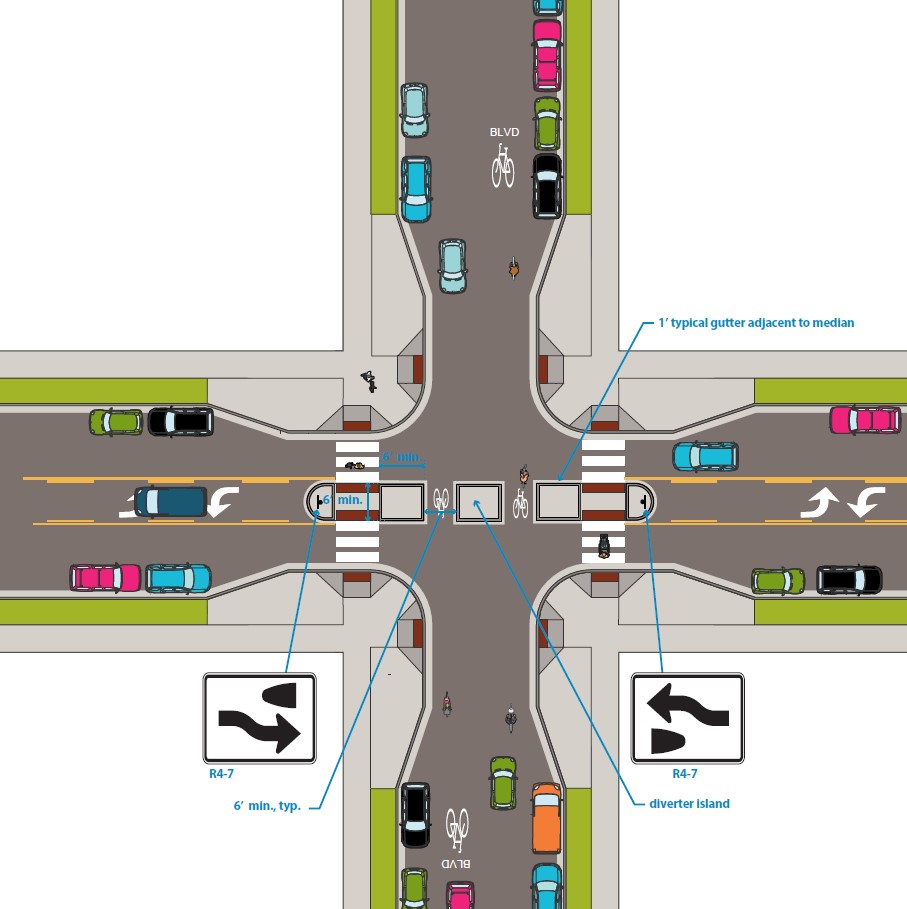Pedestrian and Bicycle Safety Islands
Search Content
Download PDF
Print Guide
Introduction
Pedestrian and bicycle safety islands are a raised median that protects pedestrians and bicyclists from moving traffic. Safety islands allow pedestrians and bicyclists to navigate one direction of traffic at a time when crossing.
Figure 3.7D.5:
Pedestrian and bicycle safety islands
Design Considerations
|
When to use |
|
|
Location |
|
|
Cut-through design |
|
|
Nose |
When feasible, safety islands should include a nose that extends past the crosswalk and protects people waiting on the island and slows turning drivers. |
|
Width |
|
|
Length |
|
|
Detectable warning surface |
|
|
Curb and gutter |
Standard 6” curb tops and 1’ gutters are generally used adjacent to medians. If there are catch basins adjacent to medians, 2’ gutters should typically be used. |
|
Signage |
A Keep Right (R4-7) should be included at the start of the safety island. |
|
Diverter islands |
Safety islands can be implemented with a diverter to restrict traffic along neighborhood greenways or eliminate vehicle crossing at unsignalized intersections with high crash rates. Coordinate with the Fire Department if considering a diverter. See Figure 3.7D.5. |
|
Including other crossing improvements |
Safety islands should be implemented with marked crosswalks and bikeway crossing markings as appropriate. Designers should also consider advanced stop bars, curb extensions, enhanced street lighting, and rectangular rapid flashing beacons (RRFBs) in conjunction with the safety island. |
|
Turning vehicles |
Safety islands may restrict turning movements to and from intersecting streets. Designers should consider appropriate design and control vehicles and model all turning movements. |
|
Greening |
Designers should generally work to include greening in medians whenever feasible. See medians guidance for more details. |
|
Midblock crossings |
See also NACTO guidance for midblock crosswalks for additional considerations. |
|
Delineator safety islands |
Low-cost safety islands can be implemented using delineators in street retrofit projects. |



